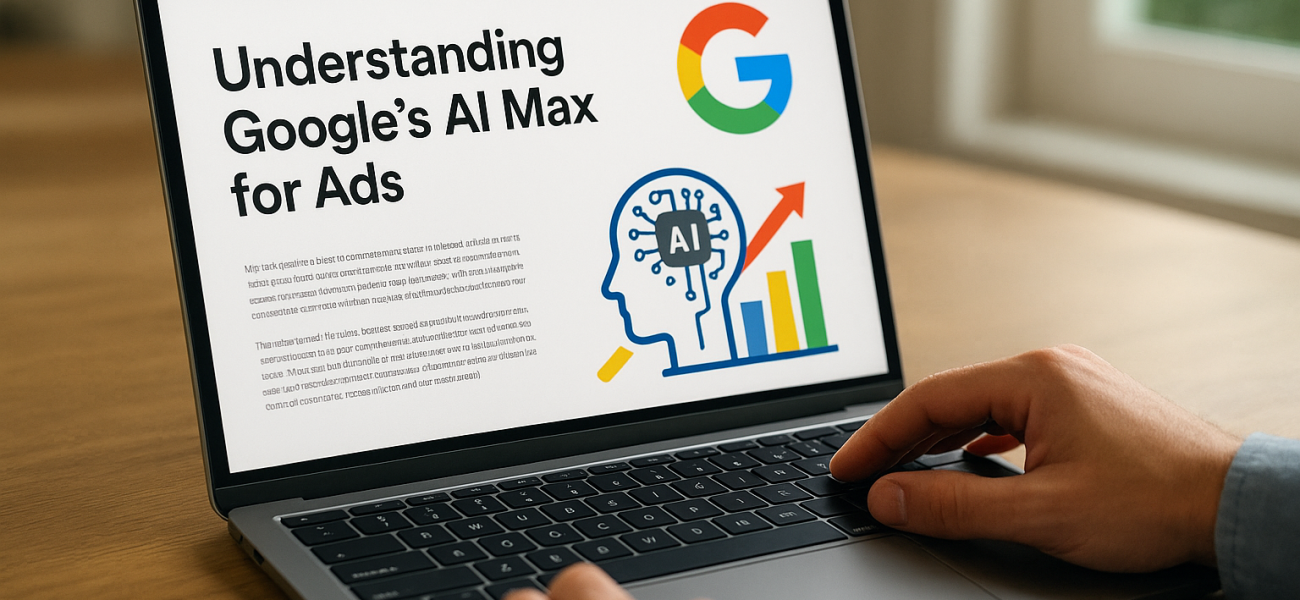Understanding Google’s AI-Powered Ad Suite: AI Max
In the rapidly evolving landscape of digital marketing, Google recently introduced an updated 26-page pitch deck for its AI-powered advertising suite, known as AI Max. This initiative aims to enhance search campaign performance by integrating artificial intelligence into the ad creation and deployment process. The initial introduction of AI Max created confusion among advertisers, prompting Google to clarify its functionalities and benefits.
How AI Max Operates: An Overview
At its core, AI Max serves to intelligently match ads with relevant user searches, even those not explicitly bid on by brands. By analyzing user intent, the tool customizes ad copy to maximize engagement and directs users efficiently to brand-specific landing pages. This level of automation aligns with current trends in AI marketing, emphasizing personalized user experiences that boost campaign effectiveness.
The Technology Behind AI Max
The sophistication of AI Max lies in its ability to leverage machine learning algorithms that analyze vast amounts of search data. According to Dr. Emily Hargrove, a digital marketing expert, “AI Max represents a significant leap in how brands can reach their audiences. It utilizes data to predict user behavior and craft personalized ad experiences.” This innovative approach is aimed at increasing conversion rates and ROI for advertisers.
Advertiser Concerns: Navigating Risks and Misunderstandings
While the benefits of AI Max are clear, many advertisers express concerns about the potential risks associated with automation. One pressing issue is brand safety, with fears that AI could inadvertently generate misleading or legally questionable claims, particularly in sectors such as healthcare and skincare, where precise information is paramount.
Accuracy and Misinterpretation Issues
Marketers have noted that AI Max sometimes struggles to accurately interpret sector-specific nuances which can lead to inappropriate text, links, or imagery being selected for ads. “There’s a fine balance between harnessing AI and ensuring it doesn’t misrepresent our brands,” emphasized Laura Chen, a senior marketing strategist. Agencies are particularly wary of the ramifications of budget misallocations, whereby funds intended for search campaigns might mistakenly flow into display networks.
Google’s Response: Enhancing Safety and Control
In light of these concerns, Google has outlined several protective measures within the updated pitch deck. This includes the introduction of negative keyword lists, asset removal features, and URL exclusions to safeguard brand integrity. Additionally, the company is embracing a “lightly generated” approach, where AI Max pulls content from pre-approved sources instead of fabricating it, allowing brands to maintain a degree of ownership over messaging.
Guidance for Effective Implementation
For advertisers looking to test AI Max, Google advises steering clear of campaigns with budgets under $50 per day. This suggestion reflects a strategic approach whereby advertisers can gain meaningful insights from their campaigns without risking significant financial exposure. “Small campaigns often don’t provide the data needed to effectively assess AI Max’s performance,” noted industry analyst Sarah Timmons.
The Future of Advertising: What’s Next for AI Max?
As Google continues to refine AI Max, exciting developments are on the horizon. The company is testing how shopping and text ads can be positioned beneath AI-generated answers in the U.S. markets, aiming to enhance user engagement and overall effectiveness. Moreover, plans are underway to incorporate ads directly within AI-generated search responses, starting in Q4 2025, which could fundamentally change the advertising landscape.
Anticipating Market Changes
With AI Max currently in global beta across various Google platforms, including Google Ads, Ads Editor, Search Ads 360, and their API, the growing adoption of this technology has the potential to revolutionize marketing strategies. Advertisers will have to adapt to new controls, including text guidelines and deployment strategies, to optimize their campaigns. “The landscape is shifting, and brands must be proactive in adapting to these changes,” advised digital marketing consultant Mark Santos.
Understanding the Implications: Why We Care
The introduction of AI Max signals a significant shift in how performance-driven advertising can function in a crowded marketplace. It’s an endeavor towards smarter targeting and automated creative solutions. However, the critical factor remains whether advertisers feel secure about maintaining control over their brand messaging and budget allocations amidst these automation advancements.
Potential Competitive Advantages
The way ads are integrated within AI search results could greatly influence visibility and spending efficiency. Brands will need to consider how these innovations affect their competitive positioning within the market. “Understanding how AI impacts ad placement and visibility is crucial for staying ahead,” mentioned marketing strategist Jenna Carter.
The Bottom Line: The Future Ahead for Google Ads Automation
AI Max holds the promise of being a foundational component of Google’s search advertising ecosystem. Yet, for it to truly succeed, Google must reassure marketers that embracing automation won’t sacrifice the integrity of brand messaging or lead to unmanageable budget disparities. As the landscape evolves, advertisers will face the challenge of integrating AI while safeguarding their brands. The movement towards AI-driven solutions presents both opportunities and challenges; the key lies in navigating them wisely.
With the rise of AI in marketing, platforms like Google Ads are set to redefine strategies and expectations. As brands prepare to utilize these tools, keeping an eye on regulatory measures around AI automation and ensuring compliance will be paramount. Effective communication and transparency will aid in fostering a more harmonious relationship between brands and the capabilities of AI Max.

